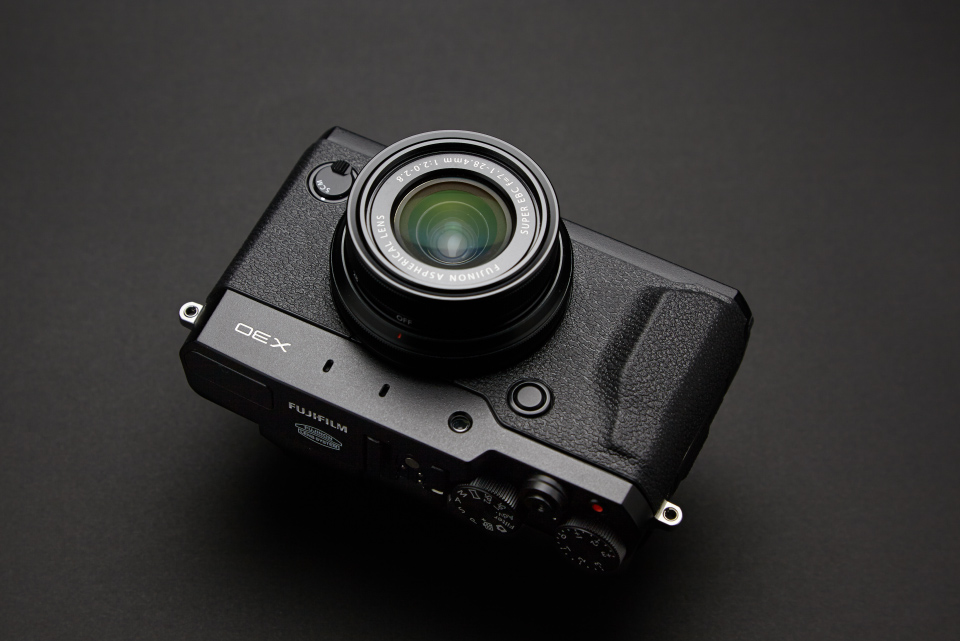PHOTO YODOBASHI
YODOBASHI CAMERA ONLINE PHOTO MAGAZINE

FUJIFILM X30 / SHOOTING REPORT
The X30 derives from the popular classical X series and it carries the X20's 2/3-inch 12 megapixel sensor and the zoom lens. So, the depiction hasn't changed much from the predecessor. But, don't be disappointed. The new EVF has 100% coverage and the large 3-inch rear monitor is tiltable. In addition, the exposure compensation has increased from +/-2EV to +/-3EV. And, of course, it has the built-in Wi-Fi. So, the X30 is an update to X20 in terms of functionality and usability.
( Photography : T.Nakanishi / Text : KIMURAX )

The lines are so delicate on this image. And, the 3D quality tells the top and bottom positions of each pine-needle. This detailed depiction reveals the power of the sensor without lowpass filter. The 2/3-inch and 12 megapixels never sound large, but I'm amazed by the color reproduction and the minute depiction.

I shot this image by stretching my hands to get closer to the subject. The minimum focus distance is 50cm in normal mode, but it shortens to 10cm in "macro" and becomes even shorter to 1cm in "super macro." The back bokeh isn't very large, but large enough for the sensor size. And, the focus peak is razor sharp. The optical image stabilizer is so powerful that I felt I could freeze the subject without holding the camera tightly.

Contrasty and clear EVF
The X30 has the EVF, while the predecessor had the optical zoom finder. And, the display lag time is just 0.005 second, which closes the linearity of an optical viewfinder. Actually, I never felt the lag while looking into it. The 0.39-inch 2,360,000-dot organic EL provides contrasty and clear view. The eye sensor automatically switches between the EVF and the rear monitor for you. Of course, it7s free from parallax and always shows the final image reflecting the exposure, white balance, and focus. Even in a backlit scene like this, it was easy to find the angle that doesn't deliver ghost.

My eyes almost hurt looking at this sharp image! The colorful trees look solid and each leaf is separated clearly. Of course, in actual size, the image quality can't compete with large sensors, but for general use including website, it's no problem at all.

In order to capture this piping hot soup curry, I switched to manual focus by turning the focus mode lever on the bottom right of the front side. I composed to capture the steam in addition to the food. I can't deliver the aroma here, but it looks spicy, doesn't it? And, the tonal gradation is great, too. Wit the built-in Wi-Fi, you can send images to SNS easily. We all know food photos can get quick reactions. Then, we always want images to look better, don't we? (laughs)

Color reproduction is not too loud, not too quiet, and realistic to the end.
I can tell the tomatoes are ripened enough to emit juice just with the touch of a finger. It depicted the uncountable scars minutely, and yet reproduced many red tones including the deep one. This realistic and faithful color reproduction is realized by the know-how that Fujifilm has accumulated over the years as a leading film manufacturer.

It separated each groove of the record disk minutely. It even captured the dust on the wooden part of the player. When I saw it first time, I really thought the dust was on my PC monitor. This tells how sharp the depiction is. And, I like that the front and back bokeh increases gradually.

The angle of view of the zoom lens is equivalent to 28-112mm in 35mm format. Maximum aperture is bright: F2 at the wide-end and F2.8 at the tele-end. So, you can keep using low sensitivity even under a little dark lighting. I have no complaints with the tonal gradation of the shadow area.

With the tilting monitor, you can shoot from difficult angles and the 3-inch 920,000-dot display provides clear view. Yet, the body is just few millimeters thicker than the 20 with the fixed monitor. Isn't it sweet?

Permissible range of noise at higher sensitivity depends on individuals, but it's the performance is great for the sensor size. I felt I could raise up to ISO800 at some scenes.

Great match between the mechanical feeling and the modern usability
Mechanical body design. Brisk start-up and fast AF. Sharp and solid depiction. The X30 inherits the high quality DNA from the predecessors. With the practical EVF and the tilting monitor, it has become more useful than ever. And, the Wi-Fi connectivity lets you operate the camera remotely as well. So, it's also great for those who want to upgrade from an entry-level compact camera. Another fun addition is the new "classic chrome" film simulation aimed for muted tones and deep color reproduction. Because of the usability, functionality, and image quality, the X30 is the best premium compact camera to carry and shoot anytime, anywhere.
( 03.12.2014 )